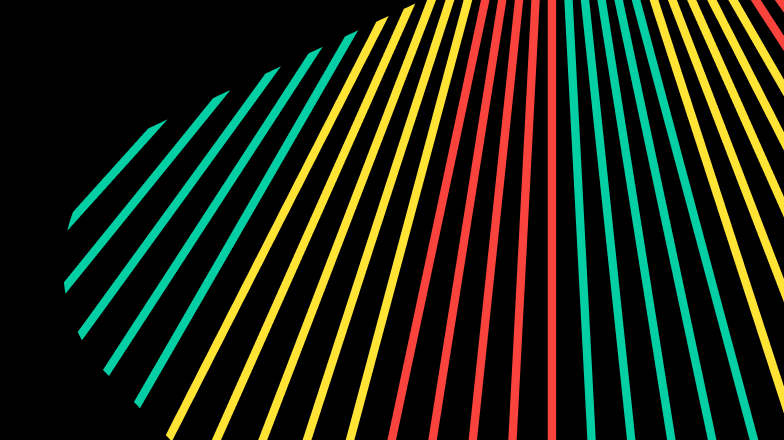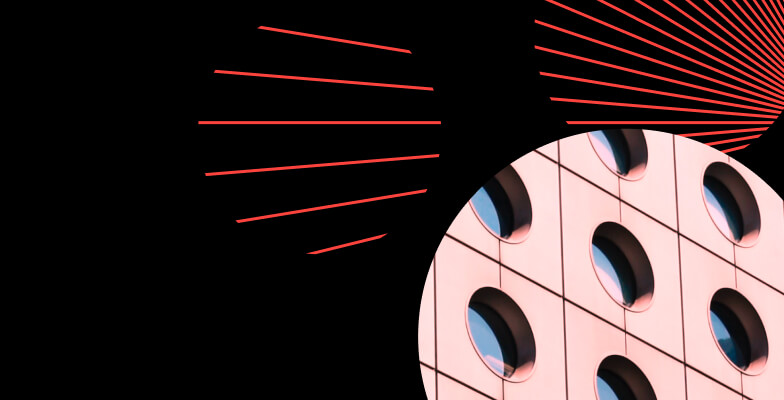
Kafka® or Kinesis: Which streaming platform is right for your business needs?
In recent years, Apache Kafka® and Kinesis have emerged as the two most prominent systems in real-time data streaming and processing, offering businesses a wide range of functionality. These event streaming platforms provide scalable and fault-tolerant processing data options, but deciding between Kinesis and Kafka may be challenging for those trying to make an informed choice, especially if budget or resource is limited, such as in start-ups, for instance.
What is Apache Kafka?
Apache Kafka is a stream-processing software platform originally developed by a team at LinkedIn, around 2010.
It’s open-sourced and is maintained by the Apache Software Foundation. The open source Apache Kafka is used to build real-time streaming data pipelines and applications that process, store, and analyze streaming data.
One of Kafka’s unique features is its ability to handle data from multiple sources, such as databases, IoT devices and social media platforms. This makes Kafka ideal for real-time data processing, analytics, and integration.
Kafka provides a high-throughput, low-latency platform for handling real-time data feeds. It enables organizations to develop reliable, fault-tolerant streaming applications that are capable of scaling quickly in no time at all.
Kafka Streams is a client library for developing apps and microservices that store data for both input and output in an Apache Kafka cluster.
With its easy scalability and flexibility, Kafka is an essential tool for companies that handle large volumes of real-time data.
What is Amazon Kinesis?

Amazon Kinesis is a fully controlled streaming data platform allowing businesses to ingest, process, and analyze real-time data massively. It’s a component of Amazon Web Services (AWS) and offers tools for companies to process and analyze streaming data in real time.
The platform is built to handle large amounts of data from various sources, including IoT devices, social media platforms, and distributed logs and includes several streaming features that make it simple for developers to create real-time data processing applications.
Users can capture data from various sources and store it in streams using Kinesis Data Stream. These streams can be partitioned to increase processing capacity and allow for parallel processing.
Other services Kinesis offers include Kinesis Data Firehose, Kinesis Video Streams, and Kinesis Data Analytics, KDA. Kinesis Data Firehose will enable users to directly load data streaming data into Amazon S3 or Amazon Redshift. In contrast, Kinesis Video Streams enables users to capture and process video streams in real time.
KDA allows users to use standard SQL queries to analyze streaming data. It also includes Apache Flink and AWS Lambda support, allowing developers to perform more complex data processing tasks.
Apache Kafka vs. Amazon Kinesis
Apache Kafka and Amazon Kinesis are well-known streaming data technologies that allow businesses to consume, process, and enable real-time dashboards and data at scale. However, Kinesis vs. Kafka brings up the point that whilst both systems share some commonalities, they also offer distinct features and capabilities that make them suited for various company purposes.
Popularity
According to Google Trends data, Kafka has consistently been more popular than Kinesis over the past five years. This could be because Kafka is an open-source platform with a large community of users and contributors whilst Amazon Kinesis is a fully managed platform provided by Amazon Web Services that comes with the proprietary costs associated with that.
Kafka’s popularity can also be attributed to its flexibility and scalability. It supports various programming languages and can integrate with multiple data sources, making it easier for developers to build custom data processing applications. Kafka’s high throughput and low latency capabilities also make it ideal for use cases such as real-time analytics, event streaming, and message queuing.
Kinesis offers several managed services that simplify ingesting, stream processing, and analyzing streaming data. It integrates seamlessly with other AWS services, making it easier for businesses using AWS to adopt it.
Kinesis is also scalable and can handle large volumes of data stored in real time.
Both Kafka and Kinesis are powerful streaming data platforms with unique features and capabilities. Whilst Kafka may be more popular due to its flexibility and open-source nature, Amazon Kinesis offers fully managed services easily integrated with other AWS services.
Use cases
Kinesis vs. Kafka are popular data streaming platforms with unique features and capabilities. When it comes to use cases, businesses should consider their specific needs and requirements to determine which platform is the best fit.
Kafka is well-suited for use cases that require real-time data processing and analytics, such as:
-
Data pipelines: Kafka’s distributed publish-subscribe architecture makes it an ideal solution for building real-time data pipelines between applications and systems.
-
Messaging: Kafka’s messaging capabilities make it popular for handling real-time event data, such as stock prices or social media feeds.
-
Log aggregation: Kafka can collect and aggregate log data from multiple sources, providing centralized flow logs and a view of system activity.
-
Streaming analytics: Kafka’s low latency and high throughput make it ideal for processing and analyzing large volumes of real-time data, such as clickstream or sensor data.
On the other hand, Kinesis is designed for use cases requiring high scalability and fault tolerance, such as:
-
Real-time data processing: Kinesis is optimized for real-time data processing, making it ideal for use cases like streaming data from IoT devices or social media feeds.
-
Real-time analytics: Kinesis can perform real-time analytics on streaming data, enabling businesses to make data-driven decisions.
-
Machine learning: Kinesis can feed certain data records data into machine learning models in real time, allowing for faster and more accurate predictions.
-
ETL processing: Kinesis can be used as part of an extract, transform, load — ETL pipeline to process and transform streaming data in real time.
Architecture
Apache Kafka is built on a distributed commit log system, allowing efficient data storage and replication. Kafka’s distributed messaging system provides scalability, reliability, and fault tolerance. It also supports low latency with an in-memory message broker.
On the other hand, Kinesis is built around a stream processor engine. This allows for high throughput and low latency for streaming data. It also provides real-time analytics, automated backups, and scalability. The Kinesis stream processor also enables developers to build custom applications to process data from multiple sources.
SDK support
When it comes to SDK support, both Apache Kafka and Amazon Kinesis offer many options for developing applications. Kafka has an ever-growing list of supported languages, including Java, Python, C#, C++, and Go. There are also SDKs for various messaging frameworks, including RabbitMQ and MQTT.
Whilst Amazon Kinesis offers a suite of fully managed streaming data services with a provided client library that includes the Amazon Kinesis Producer Library, KPL, and the Amazon Kinesis Client Library, KCL. The KPL and KCL provide a unified API to quickly and easily build applications that read and write streaming data.
Additionally, Kinesis supports Java, as it has an SDK for the Java language and support for JavaScript and Ruby.
Hosting
Kafka is an open-source platform that necessitates the management of one’s infrastructure. This implies that organizations must host and operate Kafka clusters on their computers and network infrastructure. Although this involves more technical knowledge, it also gives organizations greater control over their data and enables them to tailor their data infrastructure to their requirements (although this isn’t necessary with DoubleCloud’s managed Kafka service).
Moreover, Kafka may be implemented on-prem or in the cloud, allowing organizations to pick the hosting solution that best meets their needs.
On the other hand, Kinesis is a fully managed service offered by Amazon Web Services, AWS. This implies that AWS manages the infrastructure, which includes servers, networks, and cloud storage, letting companies concentrate on their core skills.
Kinesis is a fully managed service that provides great scalability and fault tolerance but may be restricted by AWS’s features and capabilities. Finally, a company’s unique requirements, significant technical resources, and skills determine the best option between the two platforms.
Performance
Kafka’s publish-subscribe architecture is optimized for high throughput and low latency, making it suitable for real-time data processing. Kafka brokers provide fault tolerance and scalability for producers and consumers.
Kafka’s partitioning and replication capabilities help minimize data loss and manage massive amounts of data with little latency for real-time analytics.
Moreover, Kafka has capabilities like partitioning and replication to help disperse data among multiple Krafka brokers and minimize data loss. These capabilities, especially replication factor, enable Kafka to manage massive amounts of data with little latency and deliver great performance for real-time analytics.
Kinesis uses a sharded architecture to process data across multiple consumer apps in parallel, enabling it to manage massive amounts of data with excellent scalability and fault tolerance. Kinesis offers data preservation and automatic scalability to adapt data processing capabilities to shifting needs. However, Kinesis' latency may be slightly higher than Kafka’s due to its shard-based data handling.
The choice between the two platforms depends on a company’s specific requirements, including technical expertise, infrastructure, and financial transactions.
Cost
When considering the cost of streaming platforms, both Kafka and Kinesis offer a range of pricing options. Kinesis offers a pay-as-you-go model with no upfront costs or long-term commitments. The price for each kinesis shard hour depends on the number of shards used, and pricing at the time of publishing ranges from $0.018/hour to $1.18/hour, depending on the number of shards used.
Additionally, Amazon Kinesis Firehose charges a fee for data storage and data transfer for customers who choose to use the service.
Kafka’s pricing model is based on throughput capacity. The more throughput a customer requires, the higher the cost. Depending on the number of nodes in the cluster and the required throughput, pricing currently ranges from $0.50 per hour per node to $2.50 per hour per node. Additionally, customers may also incur additional fees for services such as AWS S3 or HDFS integration.
Scalability
When choosing a streaming platform, scalability is a key consideration. Kafka and Kinesis both offer impressive scalability, but tin different ways.
Kafka was designed with scalability in mind, allowing users to scale up or down according to their needs. It’s an open-source platform that supports distributed messaging and data streams. This means messages can be distributed across multiple nodes to increase throughput and scalability. Additionally, Kafka can scale to handle large volumes of data without sacrificing performance.
On the other hand, Kinesis offers scalability through its managed service. Kinesis is a cloud-based streaming data platform that allows customers to scale up or down their usage as needed easily. Customers can also opt for a pay-as-you-go pricing model, allowing them to only pay for what they use. Kinesis can also process streaming data from multiple sources simultaneously.
Security
Regarding security, both Kafka and Kinesis provide several layers of protection. Kafka offers authentication, authorization, encryption, and access control as part of its security features. Kinesis also has authentication, authorization, and encryption, including data integrity protection with its Kinesis Data Streams and Firehose services.
Both platforms offer features like Role-Based Access Control (RBAC) and can be easily integrated with other services for additional security.
Ease of use
Both Kafka and Kinesis provide a networking environment that’s easy to use. Kafka has an intuitive user interface, with options to configure and monitor topics, data producers, and consumers. It also offers a comprehensive command-line interface (CLI) for users to manage topics, nodes, and other Kafka resources.
Kinesis has a graphical web console that simplifies the setup process. It allows users to quickly create and configure streaming applications, launch instances, and monitor real-time analytics.
Kafka and Kinesis offer developer-friendly APIs that help users access their streams programmatically.
Resilience and incident risk management
When it comes to resilience and incident risk management, both Kafka and Kinesis offer strong capabilities. When comparing Kinesis vs. Kafka, Kafka has a proven track record of being highly resilient, with features like data replication and automatic failover.
Kinesis, on the other hand, is designed to be highly scalable and fault-tolerant, with automatic scaling and data redundancy.
Configuration & features
Apache Kafka and Amazon Kinesis offer different strengths. Kafka provides a range of configurable options for tuning performance and scalability, as well as robust APIs and integration with various third-party tools. On the other hand, Kinesis offers a managed service that simplifies configuration and management with features like automatic scaling and built-in data processing.
Monitoring and management
Both Kafka and Kinesis offer strong capabilities for monitoring and management. Kafka provides detailed metrics and logging for monitoring and can be managed through various open-source tools.
Kinesis, on the other hand, offers a managed service with built-in monitoring and management features and integration with AWS CloudWatch for additional monitoring and logging. Ultimately, businesses should consider their specific needs for monitoring and management when choosing between the two platforms.
Data retention
Kafka is designed to store data for a longer period, with support for data retention policies that can be configured based on time or size.
Kinesis is optimized for real-time processing and isn’t designed for long-term data storage. Data retention in Kinesis turns raw data into other AWS storage services like Amazon S3. Ultimately, businesses should consider their specific needs for stream retention period when choosing between the two platforms.
Dependency
Kafka has a wide range of dependencies, including ZooKeeper, which can add complexity to deployment and management. Kinesis, conversely, is a managed service that eliminates the need for managing dependencies.
Monitoring
Kafka provides detailed metrics and logging for monitoring and can be managed through various open-source tools. Kinesis offers a managed service with built-in monitoring and management features and integration with AWS CloudWatch for additional monitoring and logging.
Data replication
Kafka has a robust data replication feature, with a configurable replication factor, allowing for automatic failover in the event of a node failure. This ensures high availability and data durability by duplicating data across multiple brokers. Kinesis also offers data redundancy as it spans multiple data centers and availability zones, providing a similar level of data protection and reliability.
Data storage
Kafka stores data on disk, while Kinesis stores data in a managed stream. Kafka allows more control over data storage but requires more management overhead. Kinesis simplifies data storage management through its managed service.
Comparison table
|
Comparison |
Apache Kafka |
Amazon Kinesis |
|
Architecture |
Kafka is built as a distributed streaming platform with a publish-subscribe model. It uses Kafka topics and partition key to store and manages incoming data. |
Kinesis is a managed streaming service that is part of the AWS ecosystem. It is built as a scalable and distributed platform for real-time data streaming. |
|
Scalability |
Kafka is highly scalable and can handle high volumes of data, with the ability to add more nodes as needed. |
Kinesis is also highly scalable, allowing for the processing of millions of streaming data events per second |
|
Data Storage |
Kafka stores data for a more extended period, even after it has been consumed. |
Kinesis is designed for real-time data streaming; as the data arrives, it does not store data for long. |
Pros and cons of Apache Kafka
Pros:
-
High throughput and low latency: Kafka is designed to handle large volumes of data with low latency, making it an ideal choice for real-time applications.
-
Scalability: Kafka is highly scalable and can handle thousands of producers and consumers, making it suitable for large-scale data processing.
Cons:
-
Complexity: Kafka has a steep learning curve and requires a good understanding of distributed systems and software engineering. Kafka requires distributed engineering…all of which can be handled by DoubleCloud for you.
-
Operational overhead: Kafka requires ongoing maintenance and monitoring, which can be time-consuming and resource-intensive (but not on a managed service).
Pros and cons of Kinesis
Pros
-
High throughput and low latency: Kinesis is designed to handle high-volume, high-velocity data with low latency, making it suitable for real-time applications.
-
Scalability: Kinesis can scale to handle large volumes of data, making it suitable for high-growth businesses.
-
Integration: Kinesis can easily integrate with other AWS services, making it a good choice for companies already using AWS.
Cons
-
Cost: Kinesis can be expensive for businesses with a high volume of data.
-
Limited deployment options: Kinesis is only available on AWS, which limits deployment options for businesses not using AWS.
-
Complexity: Kinesis has a steep learning curve and requires AWS architecture and development expertise.
-
Limited tooling: Kinesis has limited tooling compared to Kafka, making it less flexible for some use cases.
How DoubleCloud helps with Apache Kafka
With our managed Kafka users companies can benefit from simplified deployment, configuration, and monitoring of Apache Kafka clusters. DoubleCloud provides a range of tools and cloud services for managing Kafka, including automated deployment, performance tuning, and scaling. Notably, DoubleCloud managed Kafka is significantly more cost-effective than Confluent Cloud, offering a managed service solution at a fraction of the cost.
DoubleCloud’s platform offers real-time monitoring and alerting and integrated management of Kafka brokers, topics, and partitions. Managed Kafka on DoubleCloud enables Kafka users to focus on their core businesses while ensuring the high availability, reliability, and performance of their Kafka infrastructure.
Final words
When it comes to streaming platforms, both Apache Kafka and Amazon Kinesis have their advantages and disadvantages. It is crucial to consider the specific needs of your business to make the best decision for your streaming platform.
In conclusion, here are some of the key points from this article:
-
Kafka is more popular and is recommended for applications with high throughput.
-
Kinesis offers a simple setup and has built-in integrations with other AWS services.
-
Both platforms provide good security features, scalability, and SDK support.
-
You must also take into account the cost of hosting each platform when making your decision.
-
Ultimately, you should choose the platform that meets your business needs.
Frequently asked questions (FAQ)
Is Kinesis the same as Kafka?
Is Kinesis the same as Kafka?
No, Kafka and Kineses are not the same. Regarding Kinesis vs. Kafka, Kinesis is a managed, cloud-based streaming data platform offered by AWS, while Kafka is an open-source distributed streaming platform.
hich is better, Kinesis or Kafka?
hich is better, Kinesis or Kafka?
How do I choose between AWS Kinesis and Kafka?
How do I choose between AWS Kinesis and Kafka?
Start your trial today



